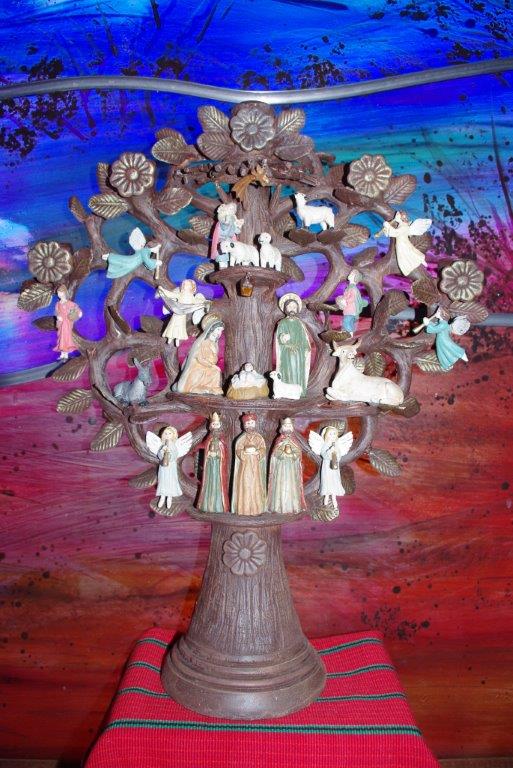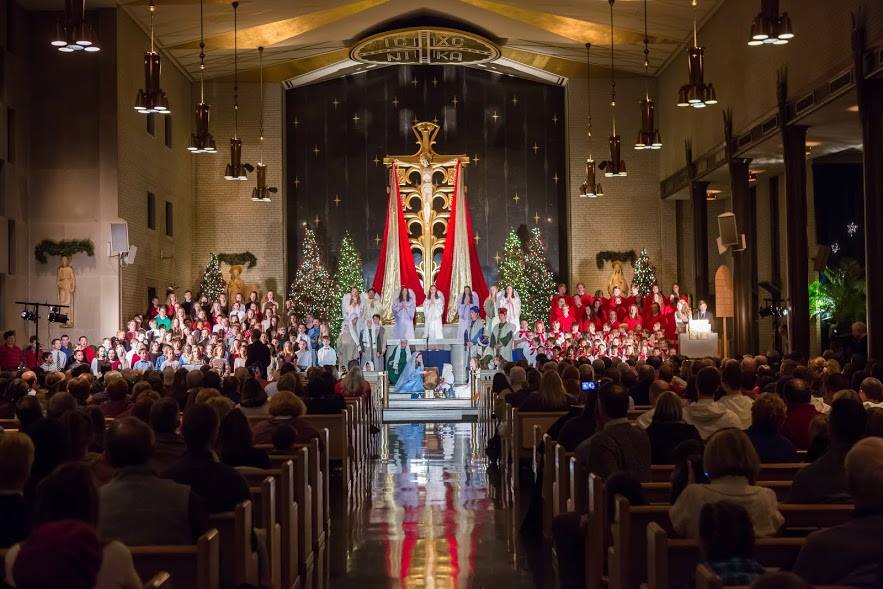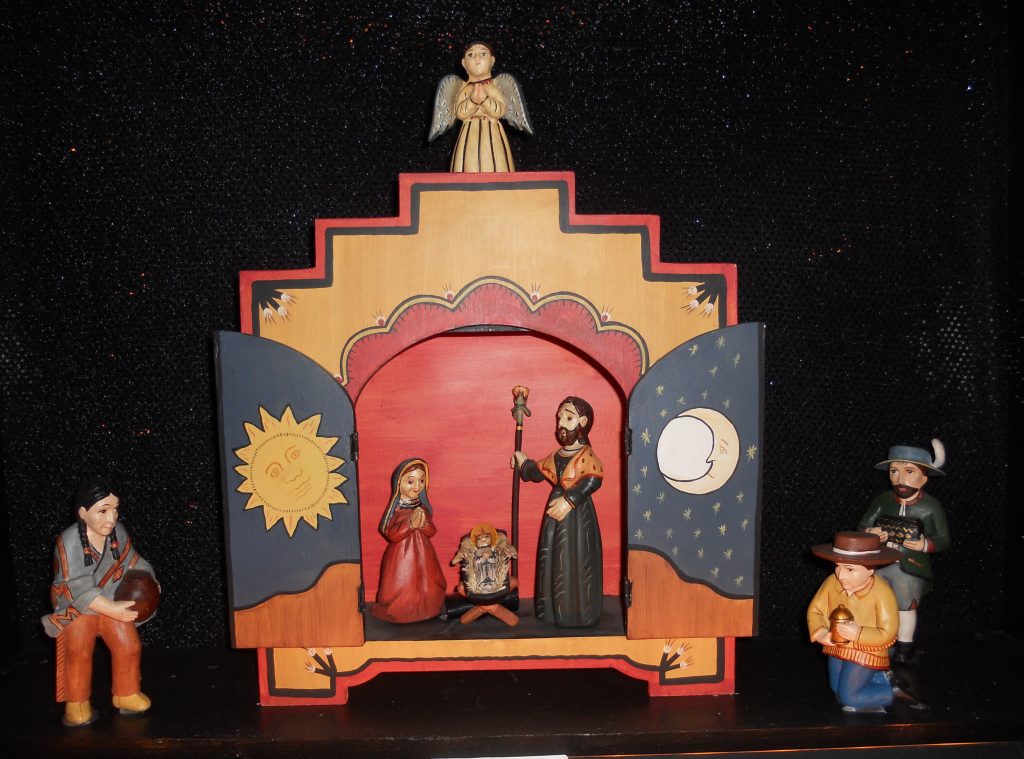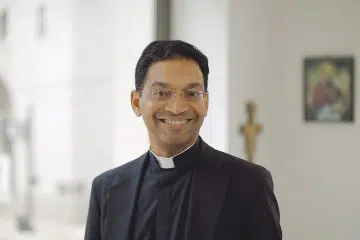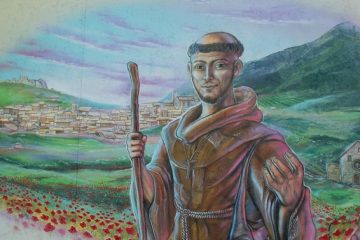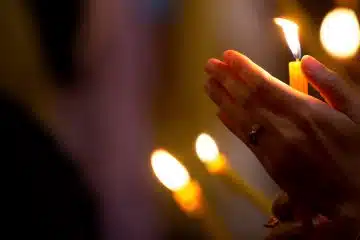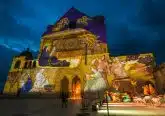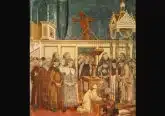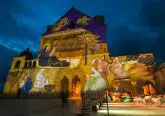Celebrating at the Stable: Nativity scenes help us understand the Incarnation
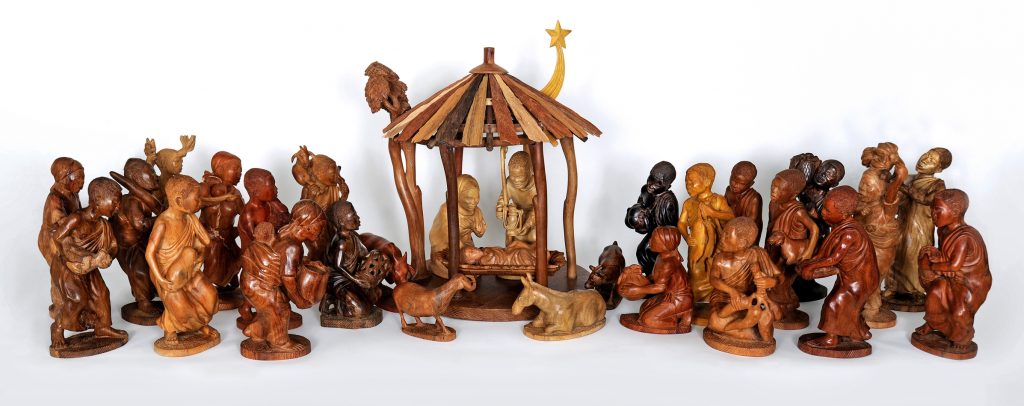 It’s the little clay baby in the manger – or maybe the empty manger, waiting until Christmas morning for the figure to appear. It’s the watchful figures of Mary and Joseph (“Mary always has to go on Jesus’s right, and Joseph always has to hold a lantern or a staff,” explained Cathy Nagy, of St. Columban parish in Loveland). It’s the Holy Family at the foot of the mountain – or in the stable – or in a cave. It’s the set passed down from Grandma, or bought in France or Germany or Africa or Guatemala, or collected piece by piece.
It’s the little clay baby in the manger – or maybe the empty manger, waiting until Christmas morning for the figure to appear. It’s the watchful figures of Mary and Joseph (“Mary always has to go on Jesus’s right, and Joseph always has to hold a lantern or a staff,” explained Cathy Nagy, of St. Columban parish in Loveland). It’s the Holy Family at the foot of the mountain – or in the stable – or in a cave. It’s the set passed down from Grandma, or bought in France or Germany or Africa or Guatemala, or collected piece by piece.
Whatever its materials and size and style, the Nativity set is a well-loved Christmas tradition in homes around the world. But it isn’t ancient, at least as the Church measures traditions. The first Nativity scene was set up by St. Francis more than 1,000 years after the birth of Christ. And for many centuries the displays remained at churches, only becoming a tradition for homes in the last 200 years.
Though collecting Nativity scenes has become a hobby for many Christians, the reason the sets exist is far more profound. For Franciscan Brother Tim Sucher, collecting and displaying hundreds of Nativity sets from around the world has been a hobby since childhood – but it’s also a way to evangelize, and a way to enter into a deeper relationship with Jesus Christ.
“The heart of St. Francis’s spirituality was Incarnation,” he said. “For him, salvation came because of incarnation – by God becoming one of us, Creation was raised to a whole new level.”
St. Francis invented the Nativity scene in 1223, when he set up an outdoor replica of the scene of Christ’s birth. There were no figures or actors at this first crèche, just an empty manger and some farm animals. Legend says that the local bishop allowed him to celebrate Christmas midnight Mass at a makeshift altar beside it.
“His desire was to experience the birth of Christ,” Brother Tim said. “Tradition goes that it was such a profound experience that some people there saw the baby Jesus in Francis’s arms.”
As a boy, Brother Tim said, he loved Christmas. His father’s unhappy childhood made him determined to give his family a festive holiday, and “the sky was the limit at Christmas,” he said. It still is, for the friar whose collection has expanded from Nativity sets to trains, Father Christmas and Santa Claus figures, and more, and has moved from the basement of St. Francis Seraph Church in Over-the-Rhine, where it had been displayed for years, to a series of rooms at Christian Moerlein Malthouse Taproom down the street.
On display for more than a month, the collection includes a giant display of figures from Italian manufacturer Fontanini, as well as hundreds of crèches from all over the world. The rooms are open during the taproom’s hours, and each year more people come to see them. The Franciscans leave brochures on their ministries and on Christmas for those who come upon it by accident, using the family-friendly display as a way to reach people who might not visit a church.
“The number of people who come back, and then come back with other people, tells me that this is needed,” Brother Tim said. “The greatest compliment I can hear is people saying, ‘thank you for doing this for the community,’ or ‘I brought my children so they can experience what Christmas is all about.’ People are looking for symbols of the real meaning of Christmas.”
Marianist Father Johann Roten knows the importance of Nativity scene displays. He’s built the crèche collection at the University of Dayton’s Marian Library to more than 3,500 sets, some of which are displayed at Christmas each year (this year’s display will be smaller than usual, because of construction at the library).
“The reason I did this collection is to highlight the importance of the Incarnation,” he said. “For Catholics, God is not above the clouds. He came all the way to meet us where we are.”
In the annual displays and his book “God Still Comes: From the Manger to the Heart,” Father Roten explores traditions in various countries, as well as the way each culture portrays people and animals, and what each group of people find beautiful. “In some countries, the display includes a mountain,” he said. “God isn’t at the top of the mountain, he comes down to the very bottom, to a cave, to incarnation.”
In some countries, the figures include only the Holy Family. In others, many more figures are expected. “In the Latin and German traditions, the Magi are an important part of the display,” he said. “There, it’s not a celebration of the close-knit Holy Family, but an announcement to the whole world through the Magi. In Latin America, a rooster is an important figure at the manger. It’s a symbol of redemption. And in France, there are 146 figures! Each figure has a story, and they’re village stories of people stealing things, or fighting with each other. But at the end of the stories, they all come to the manger. The figures represent the people of a village, with its checkered characters, making peace and celebrating together at the manger.”
Collections tend to grow. The Nativity set collection at St. Columban Church in Loveland has grown so large that it takes eight people an entire day to set them up, and so many people want to see them that the parish now schedules tours. “They’re from all over the world,” said Nagy, the parish’s coordinator of communications and events, and are made from materials as fine as stained glass to as simple as newspaper. “Each artist and country interprets them differently.”
While figures may fascinate, for some people, nothing compares to live animals – or to real people. St. Francis Seraph has hosted a live animal in its walled courtyard in the heart of the city for decades. And though many parishes and schools hold Christmas pageants, there’s nothing in the archdiocese quite like the pageant that has taken place at St. Gertrude for 50 years.
“It was composed completely by one of our Nashville Dominican sisters, and is robustly informed by the shape of the Mass,” said Dominican Father Gabriel Toretta, one of the Madeira parish’s parochial vicars. Human beings, he said, have “a need to enact” the Nativity and the Passion, both of which are celebrated with pageants at St. Gertrude. This need “comes from the Mass, “ he said. “We are so in love with our faith that we are compelled to enter into it.”
Like medieval mystery plays, which would often include entire villages, the St. Gertrude play includes more than 100 students from the school. Generations of the same family have now participated, “and there are some people who have been to every single one,” Father Torreta said. The evening production is usually standing-room only, he said, with only slightly more room at second and final production the next morning. “It draws you into it really, really deeply, because it’s not just on a stage – it happens all around you,” he said. “It’s being part of the living tradition of the Church.”
Whether singing about a silent night or carefully setting out cherished figures, Catholics love to celebrate that long-ago day when Christ was born. Whenever they do, Father Roten said, they’re celebrating the Incarnation of God. “There’s a saying from the Church Fathers: What has not been assumed cannot be redeemed,” he said. Each reenactment or representation of the Nativity communicates that message “from the Manger to the heart.”
